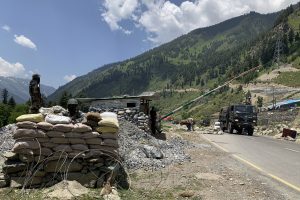We now know that the Chinese People’s Liberation Army (PLA) mounted a large operation starting early this year to shift the Line of Actual Control (LAC) between India and China in eastern Ladakh, across a front spanning hundreds of kilometers. In order to do so, the PLA moved artillery and armor, along with divisions worth of troops, into forward positions as a deterrent.
This led to the largest standoff between the Indian and Chinese armies in more than half a century. On the night of June 15, the two armies at one of the locations where the PLA had intruded, in the Galwan Valley, got into a major melee that left at least 20 Indian soldiers dead. As The Diplomat went to publication, the process of military disengagement had begun. It is not known, however, whether India will eventually have to live with a LAC shifted in its adversary’s favor.
The LAC is neither demarcated on the ground, nor do both countries agree on where it lies in terms of a common official map. In many ways, it is the perfect place for China to test its incremental land-grab strategy along the lines it had first perfected in the maritime space in the South and East China Seas.
Many Indian analysts have already noted the Indian intelligence failures at the tactical and operational levels in the run up to the current crisis. On the tactical side, as a former commander of the corps responsible for the defense of eastern Ladakh notes, Indian surveillance using drones as well as foot patrols proved to be inadequate as the PLA moved across the Indian perception of the LAC. Credible news reports, meanwhile, suggest that the Chinese incursions across the LAC happened near simultaneously.
The Research & Analysis Wing (R&AW) – India’s external intelligence service, responsible for monitoring external threats to India’s borders – either failed to detect the large-scale Chinese troop movements in the PLA bases across the LAC into forward positions or ignored it altogether. There is another possibility that a former Indian national security adviser, M. K. Narayanan, pointed out: The Ladakh crisis “is indicative of a weakness in interpretation and analysis of the intelligence available, as also an inability to provide a coherent assessment of China’s real intentions.”

































